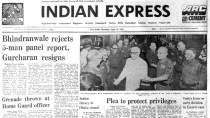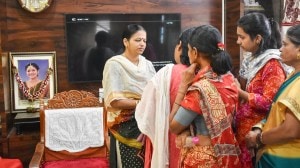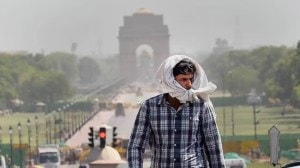- India
- International
Don’t give up on Prasar Bharati
Political will to let it mature has been absent. That is not its own failing.
 It is mistaken to think of the media simply as delivering content. Instead, we could think of media as purveying a cultural diet, which needs to be balanced.
It is mistaken to think of the media simply as delivering content. Instead, we could think of media as purveying a cultural diet, which needs to be balanced.It is both strange and unfortunate that the world’s largest democracy has a public media system that most people disparage. That the public media are themselves blamed for their shortcomings is stranger yet. The formal autonomy Prasar Bharati acquired in 1997 has led to a betwixt-and-between situation that is the worst of both worlds. It is neither totally free nor completely controlled.
Prasar Bharati has the problems of most other government organisations. The hiring criteria are so rigid that talent cannot be engaged. The government continues to control appointments and funding, so Prasar Bharati’s effective decision-making powers are extremely limited. The Sam Pitroda committee, in its January report, made a series of recommendations to overhaul the organisation, reduce its reliance on government money and make it competitive with commercial broadcasters. It will require a considerable upfront investment however, and already there are signs the government is shying away from this. The reasons are clear enough.
Its failure to compete even passably with commercial broadcasters is a scandal. This is despite its decades-long head start, and infrastructural and personnel investment that exceeds any of its competitors. Eighty per cent of Prasar Bharati’s programming positions are vacant. Consequently, less than half production capacity is utilised. Its TRPs are so low, it is typically omitted in audience surveys. Those who tune in are mostly those with no affordable option, mainly the rural poor.
This is a government that has come to power on an unprecedented wave of media support. It is ironic that the very idea of public media should be in question at such a time. Should India retain a public broadcasting service? Let us change the question: Should commercial services have a de facto monopoly over the airwaves?
A handful of business and political groups, a majority of them family-owned, currently dominate the news and entertainment landscape. The fast expanding mediascape has become a mating ground for moguls and netas. “Paid news”, another manifestation of this mating game, has taken propaganda to new levels.

In the era of state monopoly, the demand from the opposition and private sector was for autonomy. If independent professionals controlled radio and television, the media’s potential could be fulfilled, most people imagined. But that the huge media infrastructure created by the government could be bypassed was unthinkable. The last committee to make recommendations for Doordarshan in the monopoly era, the P.C. Joshi committee, cautioned that what was needed was “An Indian Personality for TV.” That was the title of its 1985 report. Its fear was that consumerism and Westernisation would corrupt Indian society through electronic media.
The debate has clearly changed. Today, we do not fear Westernisation. We are confident Indian identity is here to stay. The question is in what form, or what combination of forms. First we had Nehruvian secularism, whose faults are legion. That was followed by Hindu resurgence in the era of state monopoly. Today, society has become more assertive, diverse and complex. A more mature media must arise in response. Can the private sector do the job by itself?
The expansion of commercial channels in the 1990s brought saas-bahu serials, combining high consumerism and exaggerated traditionalism. Was the aim the promotion of Indian tradition or the education of audiences? We know the answer. Hong Kong-based Li Ka-Shing and, after him, Rupert Murdoch were at the helm of Star TV, which propelled saas-bahu shows. “An Indian personality” was for them a Trojan horse to generate television revenue. The irony is that multinationals brought small-town Indian tradition to the fore and made it upmarket, with both its positive and negative elements. Strong women flourished only in traditional roles, and patriarchal symbolism continued to reign. Families hung together, even if they fought, and elders commanded respect. The endless repetition of these values across TV stations is formula-driven and a function of market competition. Indian society is of course much more vast and complex. Most TV channels are even now making losses, and they see no option but to imitate the market leader.
The long-demanded “autonomy in broadcasting” has led to something close to a monoculture in entertainment programming, and limits diversity of opinion in news. Similar criticisms were made in the heyday of government media too. The difference, however, is that television is now watched by most people, for much longer. Its influence is far greater today.
Diversity is of the essence in a sustainable media environment. It is not enough to reflect just the dominant values. Behind the façade of static symbols are the dynamics of an evolving society, with its long-simmering aspirations now coming to the surface. This is why it is mistaken to think of the media simply as an industry delivering content, as if it was akin to water and electric utilities. Instead, we could think of media as purveying a cultural diet that, like any diet, needs to be balanced. At present, viewers consume fast food almost exclusively, and healthy options are scarce.
A public media system needs to aim higher. Public media show us what we share as human beings. It reminds us of what it means to live side-by-side and build a world together. Who can address these questions but an institution that is not a slave to the market, focusing on the long term and the collective good? A sustainable media environment needs to have a mix of private and public, education and entertainment. There needs to be a counterbalance in an era of privatisation that public media must provide.
Prasar Bharati can be what we want it to be. So far, the political will to let it mature has been absent. That is not its own failing. A maturing democracy needs to reflect and argue with itself. Public media are essential to achieve that maturity.
The writer is professor, Department of Media, Culture and Communication, New York University
EXPRESS OPINION
More Explained
Apr 26: Latest News
- 01
- 02
- 03
- 04
- 05











































